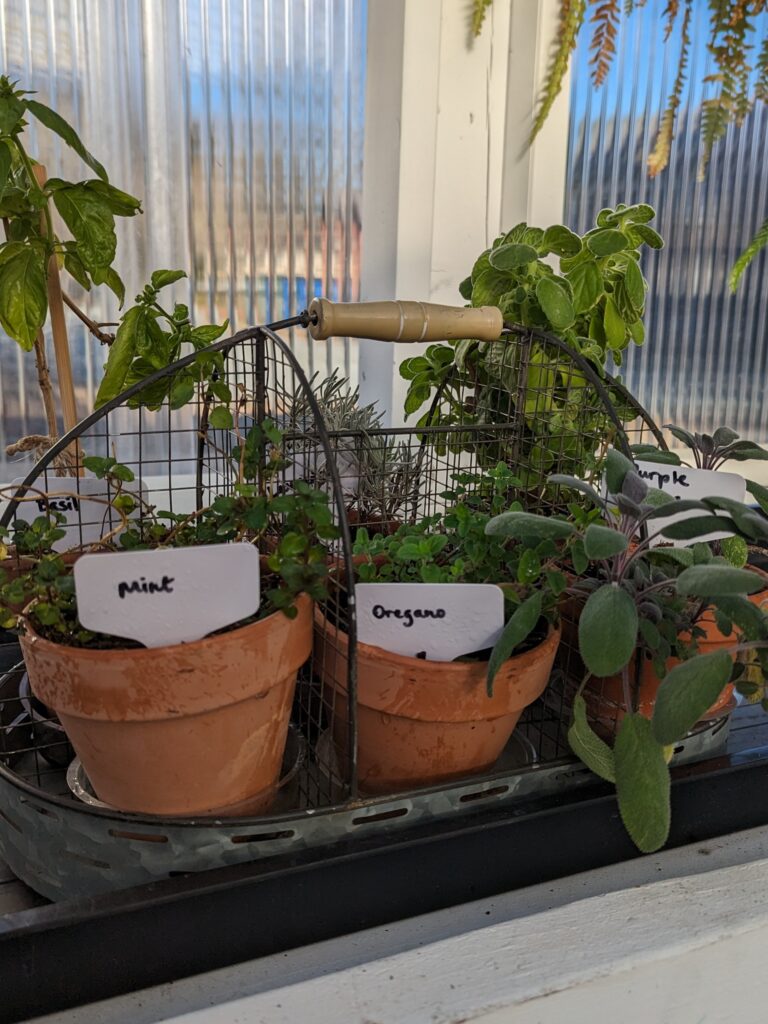Make Thyme for Herbs in August
go.ncsu.edu/readext?1014318
en Español / em Português
El inglés es el idioma de control de esta página. En la medida en que haya algún conflicto entre la traducción al inglés y la traducción, el inglés prevalece.
Al hacer clic en el enlace de traducción se activa un servicio de traducción gratuito para convertir la página al español. Al igual que con cualquier traducción por Internet, la conversión no es sensible al contexto y puede que no traduzca el texto en su significado original. NC State Extension no garantiza la exactitud del texto traducido. Por favor, tenga en cuenta que algunas aplicaciones y/o servicios pueden no funcionar como se espera cuando se traducen.
Português
Inglês é o idioma de controle desta página. Na medida que haja algum conflito entre o texto original em Inglês e a tradução, o Inglês prevalece.
Ao clicar no link de tradução, um serviço gratuito de tradução será ativado para converter a página para o Português. Como em qualquer tradução pela internet, a conversão não é sensivel ao contexto e pode não ocorrer a tradução para o significado orginal. O serviço de Extensão da Carolina do Norte (NC State Extension) não garante a exatidão do texto traduzido. Por favor, observe que algumas funções ou serviços podem não funcionar como esperado após a tradução.
English
English is the controlling language of this page. To the extent there is any conflict between the English text and the translation, English controls.
Clicking on the translation link activates a free translation service to convert the page to Spanish. As with any Internet translation, the conversion is not context-sensitive and may not translate the text to its original meaning. NC State Extension does not guarantee the accuracy of the translated text. Please note that some applications and/or services may not function as expected when translated.
Collapse ▲One thing we all have in common is that just about everyone loves to eat, and even those with food-related challenges can enjoy the sensory benefits of herbs. August 29 is More Herbs, Less Salt Day, a day to celebrate the many different options that the garden offers us as another choice to reach for instead of the salt shaker– especially if your doctor has advised you to try something else. Sometimes cutting down on salt is “good enough,” and if so, why not combine a little salt with a lot of great flavor? Herbs are amazing!
Herbs are “a plant or plant part valued for its medicinal, savory, or aromatic qualities” (Merriam-Webster). Common herbs that are not too difficult to grow in much of North Carolina include rosemary, thyme, oregano, and anything in the mint family– as long as you contain it. For therapeutic horticulture, herbs offer so many possibilities for participants of all ages and abilities, because herbs truly have something for all the senses: sight, touch, smell, sound, and taste. It’s important to note that with participants over the age of 18, up to one in twelve does not have an intact sense of smell (after age 80, it’s over 75%), so be sure to include herbs that are soft to the touch, like downy purple sage, or one of the many that are beautiful to look at!
One under-utilized group of plants in therapeutic horticulture? Culinary herbs! These fragrant and flavorful friends offer a unique combination of benefits that can be especially useful in a therapeutic setting.
Why Culinary Herbs?
- Sensory Stimulation: Herbs engage multiple senses. Their vibrant colors, delightful scents, and varied textures provide a rich sensory experience that can be calming and grounding.
- Success and Achievement: Many herbs are relatively easy to grow, allowing participants to experience the satisfaction of nurturing and harvesting their own plants.
- Mind-Body Connection: Incorporating herbs into cooking activities after they’ve been grown connects the gardening experience to healthy eating habits.
- Focus and Mindfulness: The repetitive tasks involved in caring for herbs, like watering, weeding, and harvesting, can be meditative and promote mindfulness.
3 Fun Activities with Culinary Herbs:
1. Herb Sensorium: Designate a raised bed or container garden specifically for sensory exploration. Plant a variety of herbs with contrasting textures like fuzzy mint, smooth lavender, and spiky rosemary. Encourage participants to touch, smell, and taste (with proper guidance) the different herbs.
2. Potpourri Party: After harvesting herbs nearing the end of their season, dry them for a potpourri craft. Participants can personalize their potpourri by choosing their favorite combinations of herbs and adding decorative elements like dried flowers and citrus peels.
3. Culinary Creations: Once herbs are established, plan a cooking activity where participants use their harvest to make a simple dish like herb-infused vinegar, a refreshing summer salad, or a calming cup of herbal tea.
Culinary herbs are a delightful addition to any therapeutic horticulture program. Their versatility allows them to be integrated into activities that target a wide range of needs and abilities. So, the next time you’re planning your therapeutic garden, consider adding a splash of flavor and fragrance with some culinary herbs!



